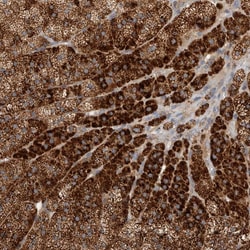Promotional price valid on web orders only. Your contract pricing may differ. Interested in signing up for a dedicated account number?
Learn More
Learn More
Invitrogen™ PDCD10 Polyclonal Antibody


Rabbit Polyclonal Antibody
Supplier: Invitrogen™ PA555503
Description
Immunogen sequence: MRMTMEEMKN EAETTSMVSM PLYAVMYPVF NELERVNLSA AQTLRAAFIK AEKENPGLTQ DIIMK Highest antigen sequence identity to the following orthologs: Mouse - 100%, Rat - 92%.
This gene encodes an evolutionarily conserved protein associated with cell apoptosis. The protein interacts with the serine/threonine protein kinase MST4 to modulate the extracellular signal-regulated kinase (ERK) pathway. It also interacts with and is phosphoryated by serine/threonine kinase 25, and is thought to function in a signaling pathway essential for vascular developent. Mutations in this gene are one cause of cerebral cavernous malformations, which are vascular malformations that cause seizures and cerebral hemorrhages. Multiple alternatively spliced variants, encoding the same protein, have been identified.
Specifications
| PDCD10 | |
| Polyclonal | |
| Unconjugated | |
| Pdcd10 | |
| 2410003B13Rik; apoptosis-related protein 15; CCM3; Cerebral cavernous malformations 3 protein; MGC1212; MGC24477; PDCD 10; PDCD10; programmed cell death 10; programmed cell death protein 10; TF-1 cell apoptosis-related protein 15; Tfa15; TFAR15 | |
| Rabbit | |
| Antigen affinity chromatography | |
| RUO | |
| 11235 | |
| Store at 4°C short term. For long term storage, store at -20°C, avoiding freeze/thaw cycles. | |
| Liquid |
| Immunohistochemistry (Paraffin) | |
| 0.1 mg/mL | |
| PBS with 40% glycerol and 0.02% sodium azide; pH 7.2 | |
| Q9BUL8 | |
| Pdcd10 | |
| Recombinant protein corresponding to Human PDCD10. Recombinant protein control fragment (Product #RP-92030). | |
| 100 μL | |
| Primary | |
| Human | |
| Antibody | |
| IgG |
Product Content Correction
Your input is important to us. Please complete this form to provide feedback related to the content on this product.
Product Title
Spot an opportunity for improvement?Share a Content Correction
